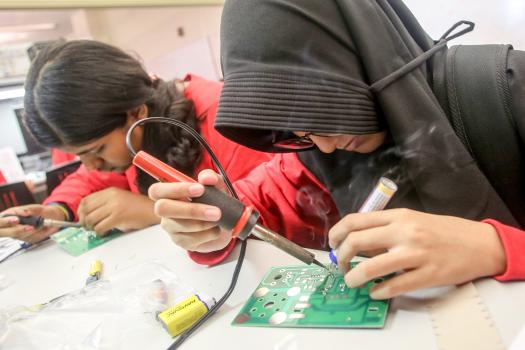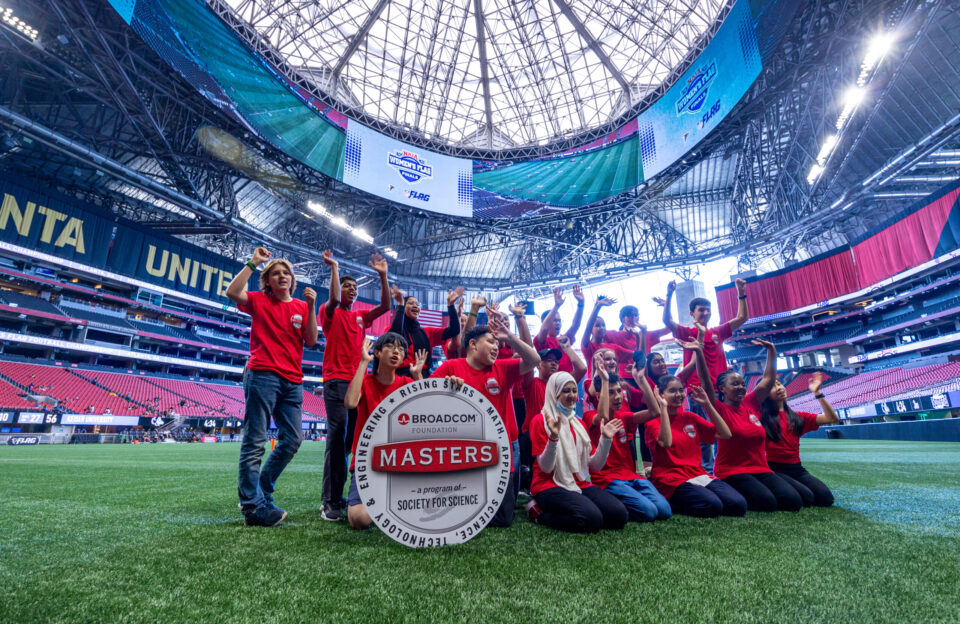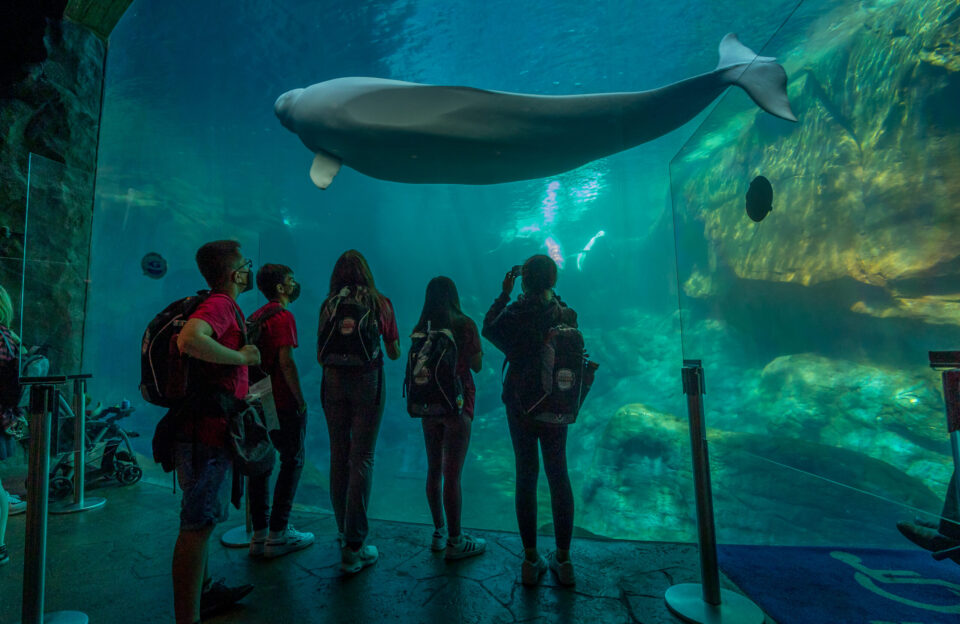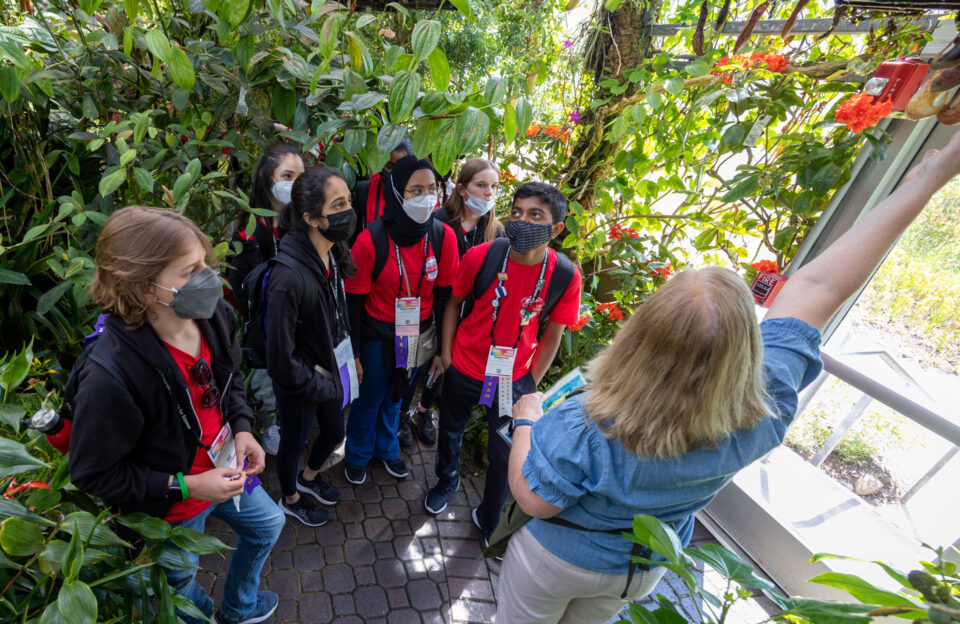Broadcom MASTERS International
STEM Activities: Radio waves, robots, and macro-invertebrates

By S.C. Stuart
It was their first visit to the USA, for most of the 24 young Broadcom MASTERS International delegates. Even for the few who had visited before, or grown up here, it was definitely their first time inside the electrical engineering laboratory at top university Carnegie Mellon — our first stop in a packed week of Intel ISEF-related activities.
But as soon as they were briefed, handed a manual, soldering iron, and constituent parts, and told to compile a battery-powered AM radio, the young scientists got to work. The environment might be unfamiliar; several struggled to communicate in English, at first — but a STEM-based project was a language they all spoke fluently.
Picking up Radio Signals
Heads down, concentrating hard, they methodically worked their way through the steps required until, suddenly, Mariana Varela Maldonado, from Mexico, said: “It’s working!”. Her AM radio had picked up a local signal and classical music was playing softly throughout the CMU lab. Inspired, everyone got back to their high stools and workshop benches. Soon the room was filled with the sounds of AM radio stations from all over Pennsylvania.
First activity complete, the delegates were buzzing with excitement — the energy levels pretty much stayed there all week. But before we left Carnegie Mellon, there was a tour around campus and a peek into the robotics lab. There, Rohan Mehta, from Canada, put on an eye-tracking device so a 6 DOF (degrees of freedom) robotic arm could “see” his intention and move into position to “feed” him. The test case “food” in the lab was marshmallows, but the setup is designed to provide in-home careers for people with disabilities.
The activities were all hands-on, an important focus for this program, and MASTERS were encouraged to engage in intellectual debate throughout: “I enjoyed the robotics at Carnegie Mellon,” said Guanting Guo, from China, “And getting to ask lots of questions.”

Take Me to the River
Pittsburgh’s weather, in May, is notoriously fickle. That afternoon it was exceptionally humid, 80-degrees, and a thunderstorm threatened. So the Rivers of Steel boat activity had to take place while docked on the Ohio River. This didn’t stop the science experiments though. Soon, after a tour of the engine room and a meet and greet with the captain, everyone was peering into microscopes.
They’d carefully lowered buckets over the side to get samples of river water and Lila Moore, from Australia, was surprised that water which appeared so dank and murky, was actually teeming with microscopic life. “We’ve just tested it for pH and salinity levels,” she explained. “And now we’re identifying the different macro-invertebrates that live here and contribute to the local ecology.”
Her lab partner, Nadine Abd Elaziz Abdalla, from Egypt, said: “This is the first time I’ve ever done this sort of experimentation.” Claudia Renta Ortiz, from Puerto Rico, added: “I want to be a marine biologist so I really enjoyed finding the plankton.” Then they turned back to the microscopes and the important tasking of documenting their findings.
Oh the Places You’ll Go
At the Senator John Heinz History Center, over breakfast, MASTERS spoke with former alums, who dropped by from the nearby Intel ISEF competition. Each spoke about their time as a middle school age delegate, and what they’re doing now they’re all (almost) grown up – how they continued to evolve their scientific projects to effect change in bio-environmental cleanup, and any advice they’d give to the current crop of delegates.
Jessung Lee, from Korea, and Teerapat Jeepetch from Thailand, paid close attention, looking to emulate their success. “This is so helpful,” said Lee. “I want to come to the US to study, probably in Chicago, because my aunt lives there.” “It’s good to hear what we might get to do next,” added Teerapat. “As Broadcom MASTERS International alums.”
The MASTERS were then sent on a treasure hunt throughout the museum, looking for clues inside exhibitions on the local glass and steel manufacturing industries, as well as a sobering look at slavery, and an invigorating take on the importance of sports to Pittsburgh. “I play football, in defense,” said Cindy Zapata from Uruguay, “So loved the sports display.”
But it was the history of Heinz Tomato Ketchup (and the other 57+ varieties) that absorbed many, especially in the innovative use of touchscreens to show how food technology emerged in the late 1800s, not far from where they were standing. “The food technology behind Heinz was really interesting,” said Nicole Hirst, from the UK. “I’d like to have my own company when I grow up, so this was helpful to learn how it got started.”

Let a Thousand Flowers Bloom
Later, at Phipps Conservatory, the delegates toured the gardens, greenhouses, butterfly pavilion and nature lab, and sat inside a sustainable classroom which is designed to maximize student wellness. This had plenty of natural light, “green walls” of oxygen-producing plants, solar panels, ceiling fans and thick insulated walls. It was a model learning environment.
“Even though I live in Pittsburgh,” said Addison Balzano, “I’d never been to Phipps before. It’s amazing to be here, and to see all the different plants from around the world.”
The delegates were astonished to learn that Phipps is built on a former truck stop. This was a heavily polluted brownfield site, where the ground was seemingly beyond repair, damaged by oil seepage from 12,000 gallon barrels that leaked, as well as corrosive battery acid. Now blue herons visit, a beehive pollinates and ducks swim in the lagoon.
You could see future city planners amongst them taking mental notes. This is a key factor of the Broadcom MASTERS International program. The ability to show emerging minds what’s possible and provable; to have them learn from each other, and take back what they’ve seen to their own countries for the good of their communities.
The Cathedral of Learning
That afternoon the delegates toured the University of Pittsburgh Nationality Rooms, a collection of 30 classrooms, each of which depicts one of the different national and ethnic groups that helped build Pittsburgh. The original aim of the historically significant interiors was cultural and aesthetic (avoiding political statements or bias), so each room is from pre-1787, the year the University was founded.

For many delegates, it was a privileged insight into not only each other’s cultures and histories, but their own. Lalitha Pingali and Amogha Narayana, both from India, stood in awe at the door of their country’s 16th Century era room. But the most popular? By consensus, this was the Early American room, because “It had secrets to tell.” said Ardilla Ayu Syahmina from Indonesia.
This room was modeled on a wealthy merchant’s home from 1650. But, as the MASTERS found out, had a false door leading up to a room where colonists hid in times of danger. Everyone enjoyed climbing up the steep staircase and making sure their shoes didn’t creak on the floorboards to avoid detection.
At every activity, official “class” photos and videos were taken – but the most compelling backdrop was the University of Pittsburgh’s Cathedral of Learning: a 535 foot, 42 story 1926 edifice. As the delegates arranged themselves on the gothic stone steps, Mario Smith from the US (the tallest in the group), held up the round Broadcom MASTERS International sign and they all gave a rousing cheer. Throughout each activity their confidence had grown, bonding the group together. As shown by the alums that morning, this is a network they can draw on for life.
“At the beginning they’re often so shy,” observed Erin Cummins, Broadcom MASTERS specialist, “They all come from such disparate cultures, and perhaps have difficulty communicating, in English. But soon we watch them open up and learn we’re all connected, and, in many ways, share the same concerns because STEM truly connects all of us.”


